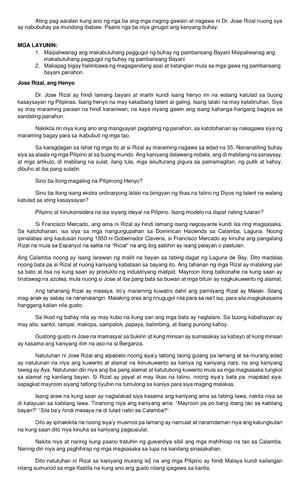- Information
- AI Chat
Was this document helpful?
the system of rules which a particular country or community recognizes as regulating the actions of its members and which it may enforce by the imposition of penalties. "they were taken to court for breaking the law"
Course: Business Administration (BSBA)
486 Documents
Students shared 486 documents in this course
University: Tarlac State University
Was this document helpful?

3. Trademark ( Secs. 121-170, IPC)
a. Definition of marks, collective marks, trade name (sec 121)
Mark means any visible sign capable of distinguishing the goods (trademark) or
services (service mark) of an enterprise and shall include a stamped or marked
container of goods.
Collective mark means any visible sign designated as such in the application for
registration and capable of distinguishing the origin or any other common
characteristic, including the quality of goods or services of different enterprises
which use the sign under the control of the registered owner of the collective mark.
Trade name means the name or designation identifying or distinguishing an
enterprise. (IPC, Sec. 121.1, 121.2, 121.3)
Add: Functions of mark
(a) Mirpuri v. Court of Appeals, G.R. no 114508, November 19,1999
Facts:
On June 15, 1970, one Lolita Escobar, the predecessor-in-interest of
petitioner Pribhdas J. Mirpuri, filed an application with the Bureau of Patents for
the registration of the trademark "Barbizon" for use in brassieres and ladies
undergarments. Barbizon Corporation, the private respondent of the case at bar
opposed the application on the ground that the mark Barbizon of the applicant is
confusingly similar to the trademark Barbizon of which the opposer has not
abandoned. Furthermore, it was alleged by the opposer that it shall suffer
damage by the registration of the mark Barbizon and its business reputation and
goodwill will suffer great and irreparable injury, and that the use by the applicant
by the said mark which resembles the trademark used and owned by oppose
constitutes an unlawful appropriation of a mark previously used in the
Philippines and not abandoned therefore a statutory violation of Sec 4 (d) of
Republic Act No. 166, as amended. The opposition was dismissed and Escobar
was issued a certificate of registration for the trademark “Barbizon”, and
subsequently Escobar assigned all her rights and interest over the trademark to
petitioner Pribhdas J. Mirpuri. However, Escobar failed to file an Affidavit of Use
of the trademark so Escobar’s certificate of registration was cancelled.
Consequently, she reapplied for the registration of the cancelled trademark.
Opposer's BARBIZON as well as its BARBIZON and Bee Design and BARBIZON and
Representation of a Woman trademarks are deemed to qualify as well-known
trademarks.
Issue:
Whether or not the Convention of Paris for the Protection of Industrial Property
affords protection to a foreign corporation against a Philippine applicant for the
registration of a similar trademark
Held:
On record, there can be no doubt that respondent-applicant's sought-
to-be-registered trademark BARBIZON is similar, in fact obviously identical, to
opposer's alleged trademark BARBIZON, in spelling and pronunciation. The only
appreciable but very negligible difference lies in their respective appearances or
manner of presentation. Respondent-applicant's trademark is in bold letters (set
against a black background), while that of the opposer is offered in stylish script
letters.
The Convention of Paris for the Protection of Industrial Property,
otherwise known as the Paris Convention, is a multilateral treaty that seeks to
protect industrial property consisting of patents, utility models, industrial
designs, trademarks, service marks, trade names and indications of source or
appellations of origin, and at the same time aims to repress unfair competition.
The Convention is essentially a compact among various countries which, as
members of the Union, have pledged to accord to citizens of the other member
countries trademark and other rights comparable to those accorded their own
citizens by their domestic laws for an effective protection against unfair
competition. In short, foreign nationals are to be given the same treatment in
each of the member countries as that country makes available to its own citizens.
Nationals of the various member nations are thus assured of a certain minimum
of international protection of their industrial property.
The main argument is embedded on Art 6 of the Paris Convention which
governs the protection of well-known marks. The essential requirement of the
said article is that the trademark to be protected must be "well-known" in the
country where protection is sought. The power to determine whether a
trademark is well-known lies in the "competent authority of the country of
registration or use." This competent authority would be either the registering
authority if it has the power to decide this, or the courts of the country in
question if the issue comes before a court
(b) Berries Agricultural Co. Inc. v. Norby Abyadang G.R. no 183404, October 13,2010
Facts:
Norvy Abyadang filed a trademark application with the IPO for the mark
"NS D-10 PLUS" for use in connection with Fungicide. Berris Agricultural Co., Inc.
filed an opposition against the trademark citing that it is similar and/or confusingly
similar to its registered trademark, "D-10 80 WP" which is also used for Fungicide











